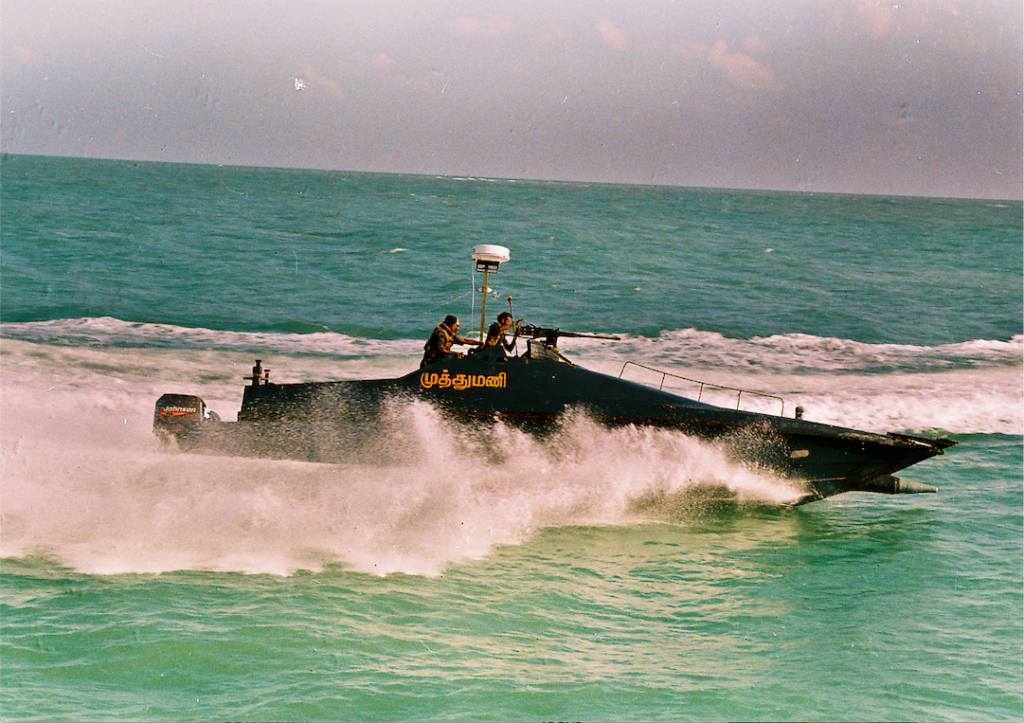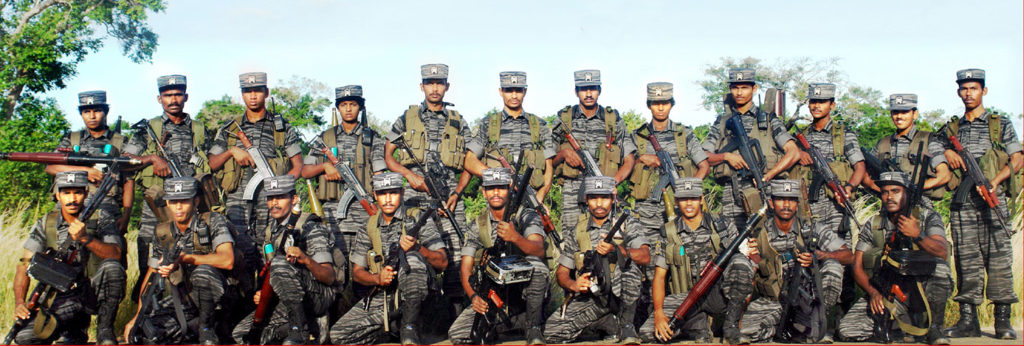
The Black Tigers* are the ultimate elite military unit of the LTTE. This unit carried out attacks, where the rate of survival was minimal or even not existent. The actual political environment has put the Tamils in an uncomfortable situation, where they wane the legacy of the Black Tigers. But we all have to understand that the legacy of the Black Tigers is in fact a beacon which sheds light upon the shortcomings of recent Tamil polity, thus causing us to identify such misgivings.
The Black Tigers
On 05.07.1987 Captain Miller drove a vehicle filled with explosives into Nelliyati Madhya Maha Vidyalayam, where the SL armed forces were stationed. Sacrificing himself, he paved way for his fellow cadres to capture the army camp at Nelliyati Madhya Maha Vidyalayam, which was
established during Operation Liberation. This day was later commemorated annually as BT Day or “Karumpulinaal”.
In an address to the BT at 1993’s BT memorial day, the National Leader of Tamil Eelam mentioned that, “This is the era of the Black Tigers! The Tigers are heading to war adorned with thunder and lightning.” As he had mentioned, the BT had opened up a new era in the Eelam wars and they challenged the SL armed forces and their international allies on the fronts of land, water and even in the air.
According to a document officially released by the LTTE („கரும்புலிகள் நாள் – யூலை 05„), 261 BT had attained martyrdom between 05.07.1987 and 01.05.2002. In this document, it is also evident that the details of 244 BT were released. Therefore, it is likely that 17 BT were not officially declared, thus indicating that they are “Mukamkaaddatha Karumpulikal” (Karumpulikal, who do not display their faces). These BT were probably involved in high-ranking assassinations like that of SL’s President Premadasa in 1993.
However, it is noteworthy that not all BT attained martyrdom through engaging in a suicide attack but also due to their engagement in combat and in accidents as well.
Defending the Black Tigers
Firstly, it is crucial that we comprehend that the BT cannot be compared with terrorist outfits such as Al-Qaeda or ISIS. The LTTE fought for a very clear goal, which has a democratic mandate and still has widespread support in the Tamil community. Furthermore, the ultimate goal of the
LTTE was the establishment of a sovereign state of Tamil Eelam and not to spread fear across the island. But we Tamils have engaged in some actions, which can be interpreted as terrorist attacks. But in reality, every single attack was well calculated and targeted. So it wasn’t mindless
violence.

to establish and sustain
Tamil maritime sovereignty.
Only 6.5% of the BT have executed acts that can be interpreted as such (within the period up until 01.05.2002) where around 33% of the attacks occurred on land and the remainder were conducted at sea. Such information portrays the weight of the task sustained by the BT – the creation and maintenance of the maritime sovereignty of Tamil Eelam.
As Tamil Eelam is surrounded by the ocean on three sides, it is essential to control the sea as in many battles the Tamils had been defeated due to the SL armed forces’ ability to resupply themselves through the access which they had via the sea. This is evident through the first attack on the Elephant Pass in 1991. The Tamils besieged that strategically important military camp, when the SL armed forces landed reinforcements through the sea, which subsequently secured victory for Sri Lanka. However, 9 years later, the Tamils overran the same camp with the combined efforts of the Sea Tigers, as they landed their units behind the enemy line through the sea. Within that 9 year period, the Tamils had gained maritime sovereignty, which was established by the sacrifices of the Black Sea Tigers.**

Tamil maritime sovereignty.
The sea was also a crucial factor for the Tamils, as all of their supplies such as; arms, ammunition, fuel, medicine etc were received via the sea. The BT played a major role in the process of securing these supply-lines. These supply-lines were extremely crucial in nature and thus their destruction with the assistance of the USA and India had played a major role in the destruction of the LTTE in 2009.
The BT’s activities were not only limited to securing the maritime sovereignty of Tamil Eelam, but also extended to preserving the lives of their fellow cadres. The 21 BT, who sacrificed their life in “Operation Ellalan” in 2007 are a testament to this quality. In “Operation Ellalan”, 21 BT penetrated an airbase in the Sinhala territory of Anuradhapuram. 24 of 27 planes at this airbase were completely destroyed or damaged by the BT. Had the “regular” forces of the Tigers been administered for this attack, the Tamils would have lost a lot more than 21 lives.

If we understand these facts, we may be able to comprehend the bigger picture within which the BT’s role functioned as a crucial factor of the armed struggle. Through such comprehension, we will be capable of defending ourselves against rude arguments against the Tamil struggle, where the sole purpose is only to delegitimise it.
The legacy of the Black Tigers
Whilst addressing BT in 1993, the National Leader of Tamil Eelam mentioned that, “The blackness is a symbol for conviction and the strength of will. From another angle it is symbolising the darkness where the darkness is portraying invisibility, enigma and secrecy – thus the word Black Tiger has several deep meanings.”
In recent times, it has become evident that such characteristic aspects are lacking in the Tamils’ struggle. In our struggle, every single cadre wore a cyanide capsule around their neck. The cyanide was not only a symbol for the importance of secrecy in the armed struggle but also one that portrayed a readiness to die for the cause. When the BT era began, the readiness to die had reached a point, where the ultimate opposite pole of individualism had been reached. However, after the destruction of the Tigers in 2009, the impacts of individualism upon the Tamils’ struggle have been multifold and crucial in nature.
Due to the impacts of factors such as; status, career, and wealth, in our current context we are in a period where mostly there are many Tamil activists yet not any freedom fighters. Whilst it is not a crime to prioritise an individual’s own life and their personal benefits, a fundamental truth must be comprehended to ensure the progression of our struggle. In so much, to reach the next stage of the struggle, there is a need for people, whose first priority is the struggle. Whilst their number may be small like that of the BT, their impact will and must be mammoth in nature.
* Hereon referred to as BT.
** BT who conduct BT operations on the seas. Generally, the operations were conducted through attaching explosives to their vessels.

Schreib einen Kommentar